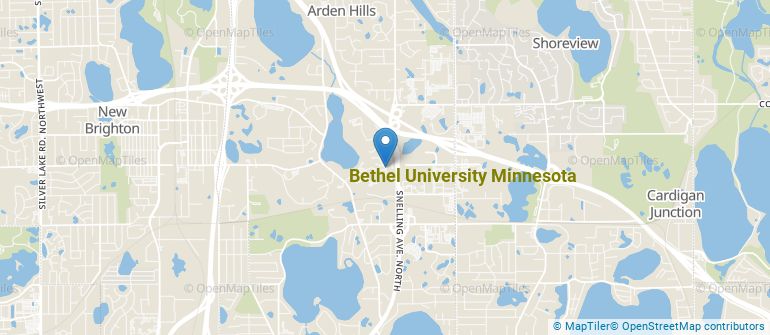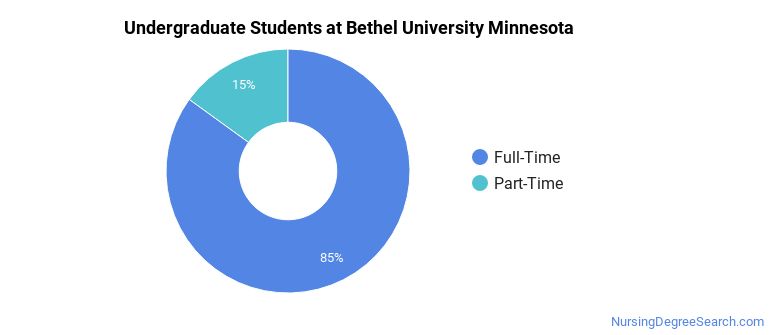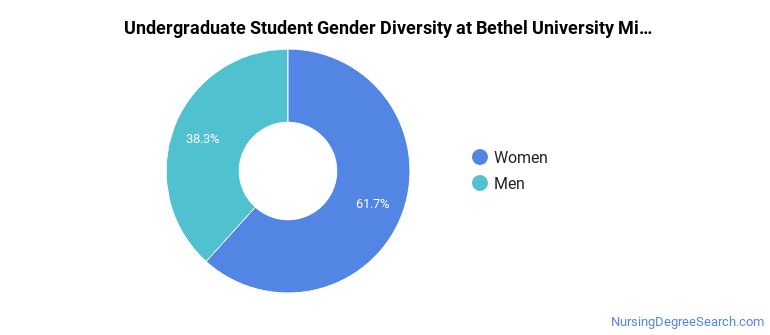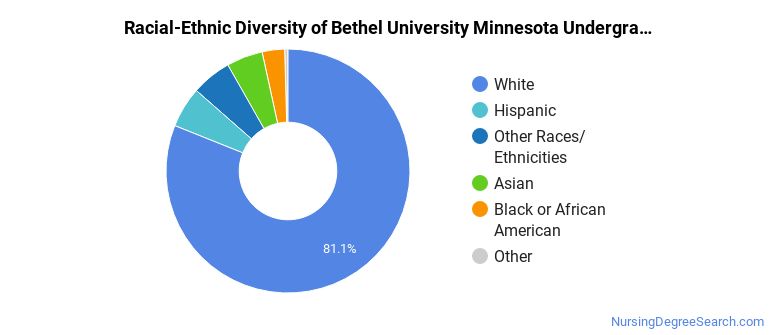Bethel University Minnesota Nursing Programs
Located in Saint Paul, Minnesota, Bethel University Minnesota is a private not-for-profit institution. Saint Paul is a good match for students who enjoy the safety and convenience of the suburbs.
Where Is Bethel University Minnesota?

Contact details for Bethel University Minnesota are given below.
| Contact Details | |
|---|---|
| Address: | 3900 Bethel Dr, Saint Paul, MN 55112 |
| Phone: | 651-638-6400 |
| Website: | www.bethel.edu |
How Do I Get Into Bethel University Minnesota?
You can apply to Bethel University Minnesota online at: https://www.bethel.edu/undergrad/admissions/apply/
Admission Requirements for Bethel University Minnesota
| Submission | Required? |
|---|---|
| High School GPA | 1 |
| High School Rank | 5 |
| High School Transcript | 1 |
| College Prep Program | 3 |
| Recommendations | 5 |
| SAT or ACT Scores | 5 |
| TOEFL | 5 |
How Hard Is It To Get Into Bethel University Minnesota?
Approximately 41% of accepted students are men and 59% are women. The acceptance rate for men is 70%, and the acceptance rate for women is 74%.
Average Test Scores
Bethel University Minnesota received ACT scores from 45% of accepted students. When looking at the 25th through the 75th percentile, ACT English scores ranged between 19 and 28. Math scores were between 18 and 0. Composite scores were between 20 and 28.
Can I Afford Bethel University Minnesota?
The net price is calculated by adding tuition, room, board and other costs and subtracting financial aid.
Student Loan Debt
It's not uncommon for college students to take out loans to pay for school. In fact, almost 66% of students nationwide depend at least partially on loans. At Bethel University Minnesota, approximately 61% of students took out student loans averaging $10,464 a year. That adds up to $41,856 over four years for those students.
Bethel University Minnesota Undergraduate Student Diversity

There are also 1,092 graduate students at the school.
Gender Diversity
Of the 2,313 full-time undergraduates at Bethel University Minnesota, 38% are male and 62% are female.

Racial-Ethnic Diversity
The racial-ethnic breakdown of Bethel University Minnesota students is as follows.

| Race/Ethnicity | Number of Grads |
|---|---|
| Asian | 111 |
| Black or African American | 69 |
| Hispanic or Latino | 125 |
| White | 1,875 |
| International Students | 10 |
| Other Races/Ethnicities | 123 |
Geographic Diversity
Minnesota students aren't the only ones who study at Bethel University Minnesota. At this time, 23 states are represented by the student population at the school.
Over 21 countries are represented at Bethel University Minnesota. The most popular countries sending students to the school are China, India, and Kenya.
Bethel University Minnesota Nursing Concentrations
The table below shows the number of awards for each concentration.
| Major | Bachelor’s | Master’s | Doctor’s | TOTAL |
|---|---|---|---|---|
| Registered Nursing | 91 | 0 | 0 | 91 |
| Nurse Midwife/Nursing Midwifery | 0 | 17 | 0 | 17 |
| Nursing Practice | 0 | 0 | 3 | 3 |
| Nursing Administration | 0 | 0 | 0 | 0 |
| TOTAL | 91 | 17 | 3 | 111 |
References
*The racial-ethnic minorities count is calculated by taking the total number of students and subtracting white students, international students, and students whose race/ethnicity was unknown. This number is then divided by the total number of students at the school to obtain the racial-ethnic minorities percentage.
- College Factual
- National Center for Education Statistics
- Image Credit: By Mingusboodle under License
More about our data sources and methodologies.
